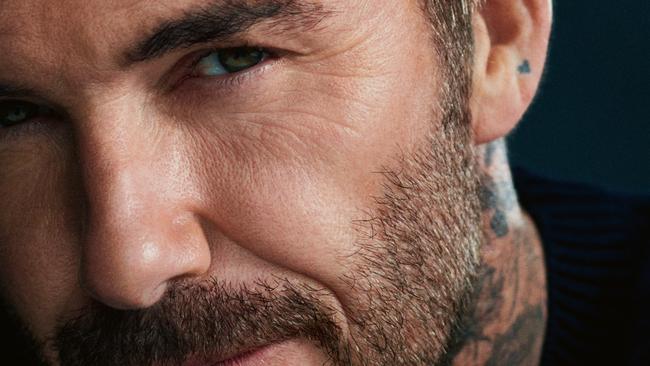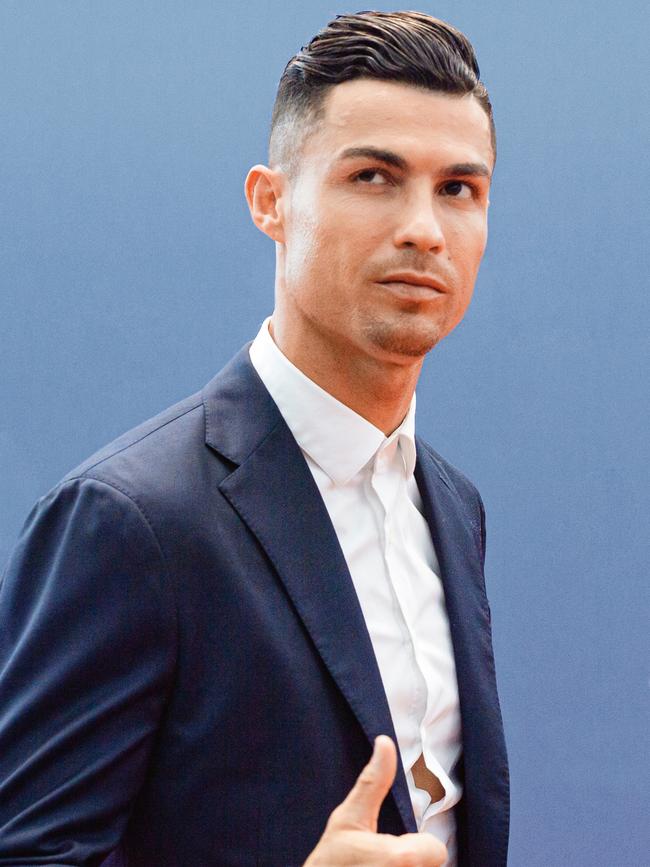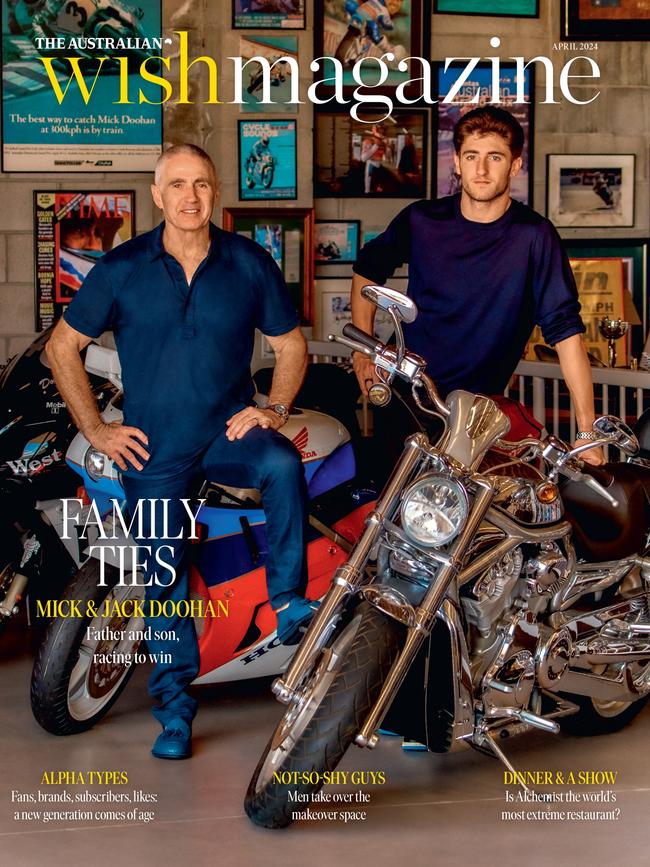Men’s rising interest in cosmetic procedures
More men are choosing to enhance their appearance with hair transplants, veneers and tweakments, but are they willing to talk about it?

On his 40th birthday, hairdresser Stuart Bane gifted himself a solo four-day trip to Turkey. Resort towns and ancient cities weren’t on the Sydney colourist’s travel to-do list. Rather, after being picked up at Istanbul airport, Bane was driven to his hotel and the next day transferred to a hair transplant clinic. That morning his sparsely populated forehead was sectioned with black marker and then, during the next three hours (after being administered a local anaesthetic), Bane had 2750 follicular units extracted from the back lower half of his head using incisions around the follicles. There was a quick break for lunch, then another three hours whereby the grafts were implanted into the hairline using implanter pens that were jabbed into the top of his head.
“I’m one of four boys and we all have a high recession, but it had become this little island at the front,” says the now 42-year-old. “On day three, they removed the bandages and the fourth day I was given my first wash and was then free to depart after being given a special haircare regimen to follow for the next nine days.”
Bane documented his entire Turkey experience he describes as “gnarly” and “hectic” on his Instagram account @stuartbanecolour, in what’s an honest insight into the pain factor, the cost (approximately €2600), fine-print details – and the gore.
“There’s still a bit of a stigma around seeking out solutions for men’s hair loss,” he sighs. “That’s why I documented everything on my social media. I wanted to control the narrative. I didn’t intend it to become so detailed, but everyone started DM-ing me with questions. Guys don’t talk about this stuff with other guys; they’re more likely to discuss it with partners. So, I wanted to put it out there.”
Whereas once men traditionally kept their anxieties around lost youth to themselves, they’ve never spent so much on hair transplants, wrinkle relaxers, dermal fillers and cosmetic dentistry as they’re doing now. That’s according to experts such as Dr Russell Knudsen of Double Bay hair loss surgery The Knudsen Clinic who – despite charging roughly three times what a trip to Turkey will set you back – says he’s never been busier. “In 2023 alone I conducted 2500 consultations and 270 operations. Up until five years ago I referred to these types of treatments as ‘secret men’s business’, but two things happened: Dr Google and social media.”
According to Knudsen, a proportion of this awareness is coming from Facebook advertising, with clinics in Turkey investing about €100,000 a month on just this kind of marketing, alone. High-profile sports stars such as Cristiano Ronaldo are also not only fronting their campaigns, they’re even investing in clinic chains. “Istanbul’s medical tourism industry is booming due to low-cost package deals,” says Knudsen. “It’s the world capital of hair transplants. But the whole thing is also a bit of a factory process. There are reputable clinics operating, however about 95 per cent don’t have a doctor on staff. They’re hair transplant technicians whose training consists of a seven-day course. Baldness is a progressive condition. If you don’t have a long-term treatment plan in place, you’re at risk of encountering issues later.”
David Beckham’s thick head of hair in the recent Netflix series Beckham also had people googling “hair transplant” in droves upon its release last October. Whereas once Beckham’s hair appeared to be thinning around the crown while his temples receded, suddenly it looked full, and there were no visible scars, leaving everyone speculating he’d undergone follicular unit extraction, the same procedure Bane underwent in Turkey. That said, Beckham has never commented on it. Perhaps he’s just a master of disguise?

Footage in the documentary from Beckham’s younger years also had viewers marvelling over how much his teeth have changed since then. According to Dr Gamer Verdian of Double Bay’s Dental Lounge, seeing high-profile athletes and actors with perfect teeth has had a dramatic impact on the number of men seeking out mouth makeovers. Verdian specialises in cosmetic work and estimates that 10 years ago men made up just five per cent of his clientele; today that figure is closer to 40 per cent.
“Men were also telling me they were sick of looking at themselves on daily Zoom video calls during covid and thinking, ‘How bad do my teeth look?’. The upside to this is they’re now better educated and comfortable getting the work done, spending anything from $20,000 to $100,000, depending on the complexity. For some patients I may be rebuilding a bit, improving colour – a whole host of things; while others might just want 10 to 12 veneers and spend $25,000 to $35,000. But overall, they want natural.” Divorces are also resulting in increased pressure to look good. “Post-split men are back on the dating scene and perhaps seeing younger woman, so they think they need to spruce up that smile.”
The need to keep up with younger partners is also why one of the most popular colour services requested by male clientele at “Blonde Whisperer” Belinda Jeffrey’s Sydney La Boutique salon is Redken Brews, a demi-permanent colour for camouflaging and blending grey for guys whose hair is 50 per cent or less of the colour.
“It’s a quick 10-minute service and only $100, but they know they need an expert who can determine the right colour choice for them,” says Jeffrey.
“Colour for men is about making them feel younger and fresher. They can have bouts of insecurity even though they’ve built up impressive professional careers. Younger men on their teams at work make them feel like they’ve still got to prove they can retain a competitive edge and stay relevant.”
Historically, non-invasive cosmetic tweakments like wrinkle relaxers, chemical peels, and fillers to lift cheekbones and smooth out “puppet mouths” have been geared towards women. Yet Dr Joseph Hkeik says his two Sydney All Saint clinics have always had a lengthy line of men come through their doors.
“What’s different now though, is that they’re starting younger, and they’re no longer shy about it,” says Hkeik. “Yesterday I had a successful real estate agent going through a divorce come to see me for a consult, and he agreed to do everything I recommended on the spot. That would have never happened before.”

The guys are also doing their homework. “Ten years ago, men were anti-filler,” explains Hkeik, who says men now spend $5000 to $6000 on average per treatment. “They used to come in and request Botox thinking it was the solution to everything. Now they’re also asking for laser and skin-tightening treatments like Morpheus8, which have surged in popularity.”
As for most men’s No.1 gripe? It’s crow’s-feet. “Between the ear and the cheek there is a lateral cheek fat pad that loses volume as we age, so addressing that with filler has become really popular,” says Hkeik. “Unlike women, men don’t talk about looking like someone else or talk of copying celebrities’ features. They’re not into changing the shape of their face. All they see is sun damage.”
Although Hkeik says it’s 40- to 60-year-olds who make up most of his clientele, patients are definitely getting younger and coming from all walks of life. “It’s not just the tech titans, the chief executives, the lawyers, gay men and celebrities. It’s plumbers, builders and panelbeaters, too. They find me through word of mouth: ‘Such-and-such told me about you’.” But whether they’re willing or brave enough – like Bane – to document or discuss their experiences remains to be seen. “The more men there are talking about this kind of stuff, the less stigma,” says Bane. “Everyone has anxieties around ageing and their looks. We might as well talk about it.”




To join the conversation, please log in. Don't have an account? Register
Join the conversation, you are commenting as Logout